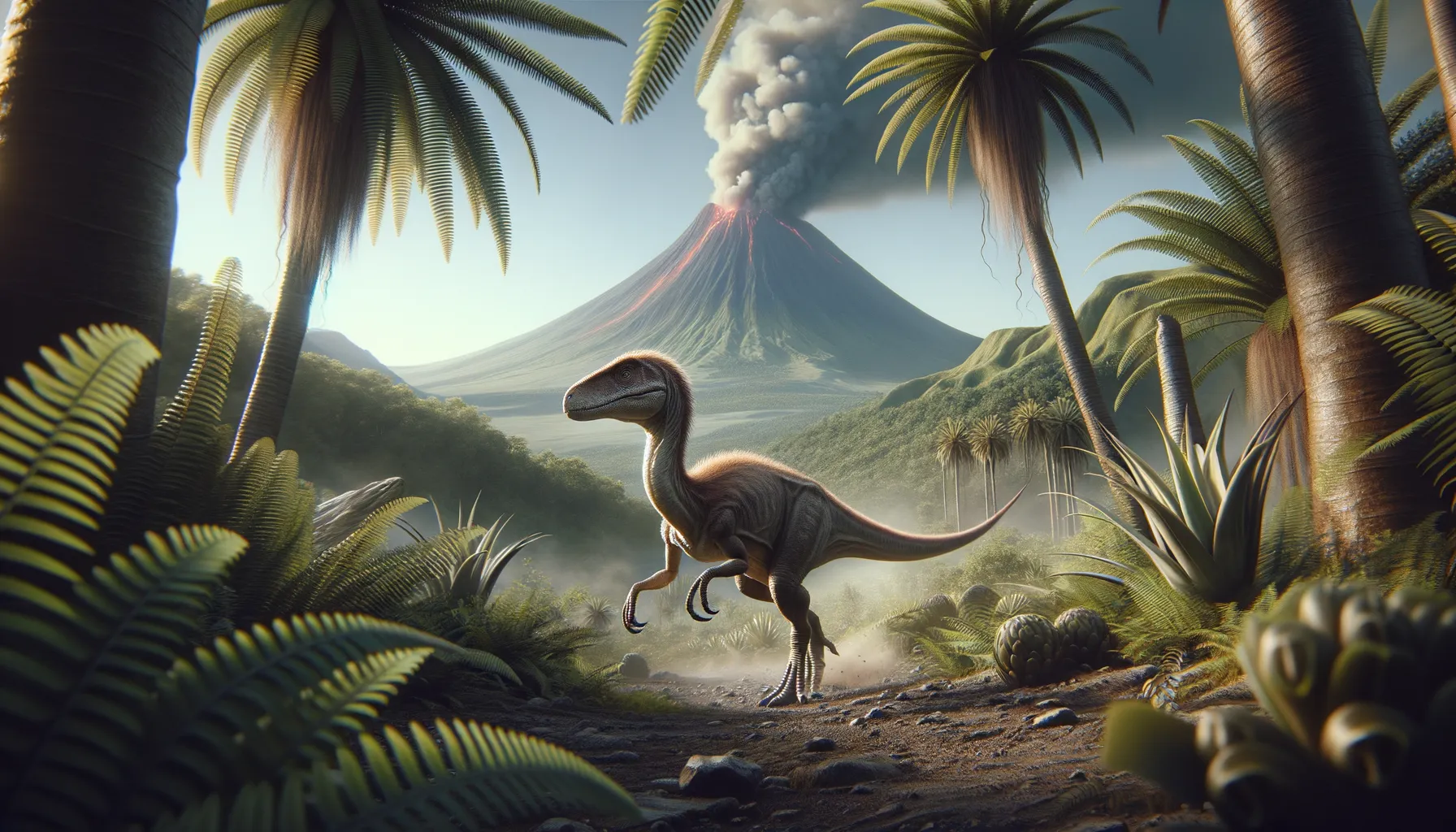
Segisaurus
Swift sprint through the ancient jungles!
Period
Jurassic
Length
Measured about 1-1.5 meters in length.
Height
Stood around 0.5 meters tall at the hips.
Weight
Approximately 7-11 kilograms.
Segisaurus was a small bipedal dinosaur that roamed the Earth during the Jurassic period. With its light body structure and long legs, it was likely a fast and agile hunter. Despite its small size, Segisaurus is a fascinating example of early dinosaur evolution, providing insight into the adaptations that allowed these fascinating creatures to thrive in their environments. Its slender frame and swift movement hint at a life spent dodging predators and foraging for food.
Diet
Segisaurus was likely a carnivorous dinosaur, feeding primarily on small animals and insects. Its sharp teeth suggest it was well-equipped to tear into its prey, making use of its speed to catch elusive meals.
Hunting
Segisaurus was an adept hunter, possibly using stealth and quick movements to surprise its prey. Its small size and nimble build suggest it could dart swiftly through its environment, making hunting a mix of patience and precision.
Environmental challenges
Living during the Jurassic period, Segisaurus faced challenges such as fluctuating climates and changes in available prey. This would require a flexible diet and adaptable hunting strategies. It also had to beware of larger predators, which could pose a significant threat to its survival.
Speed
Relatively fast for its size, likely quick on its feet.
Lifespan
Estimated to live up to 10-20 years in the wild.
First discovery
First discovered in 1936 in Arizona, USA.
Fun Facts
- Segisaurus was a small dinosaur that lived during the Early Jurassic period, about 183 million years ago.
- Its name, Segisaurus, means 'Segi Canyon lizard,' named after the area in Arizona where it was discovered.
- Unlike many other dinosaurs, Segisaurus had long, slender legs, indicating it was likely a fast runner.
- Segisaurus was about the size of a chicken, making it one of the smaller dinosaurs known to scientists.
- It is believed that Segisaurus might have had feathers, similar to some modern birds.
- Despite its small size, Segisaurus had sharp claws which it likely used for hunting small prey.
- Segisaurus remains are rare, and only a few incomplete fossils have been found, making it a bit of a mystery for paleontologists.
Growth and Development
Segisaurus, like many small dinosaurs, grew rapidly to reach maturity, developing its distinct features quickly. This rapid growth was essential in a world filled with predators. Its adaptation to different environments likely involved a combination of inherited traits and learned behaviors.
Habitat
Segisaurus inhabited lush and diverse ecosystems, often found in forested areas that provided cover from predators. Its habitat would have included abundant plant life, which supported various prey species. These areas were likely dynamic and required constant vigilance for survival.
Interaction with other species
Segisaurus may have coexisted with various other dinosaur species, interacting mainly through competition for prey. Its presence in the ecosystem was one among many smaller predators. Cooperation was not typical, but avoiding larger predators would have been essential.
Natural lifespan
In natural conditions, Segisaurus may have lived up to 20 years.
Reproduction
As a small dinosaur, Segisaurus likely laid eggs, with nests hidden in protected areas. Parental care might have been minimal, with young Segisaurus quickly learning to fend for themselves. Survival of offspring relied heavily on avoiding early predation.
Social behaviour
Segisaurus might have been solitary or lived in small groups, but definitive evidence is sparse. If social, it may have formed packs for hunting or protection. Its social structures would depend on environmental pressures and availability of resources.
Fossil locations
Fossils of Segisaurus have been found in the Kayenta Formation of Arizona. These discoveries contribute valuable data on early dinosaur adaptations. Their presence also helps paleontologists understand the distribution of species in Jurassic North America.
